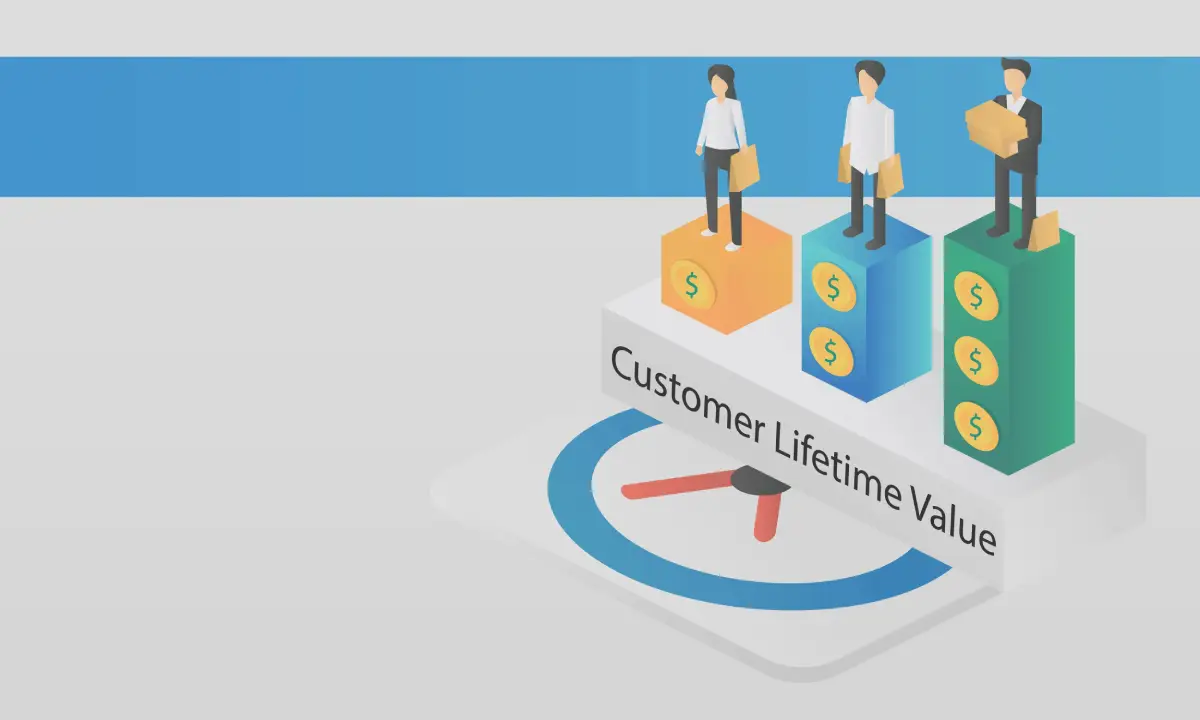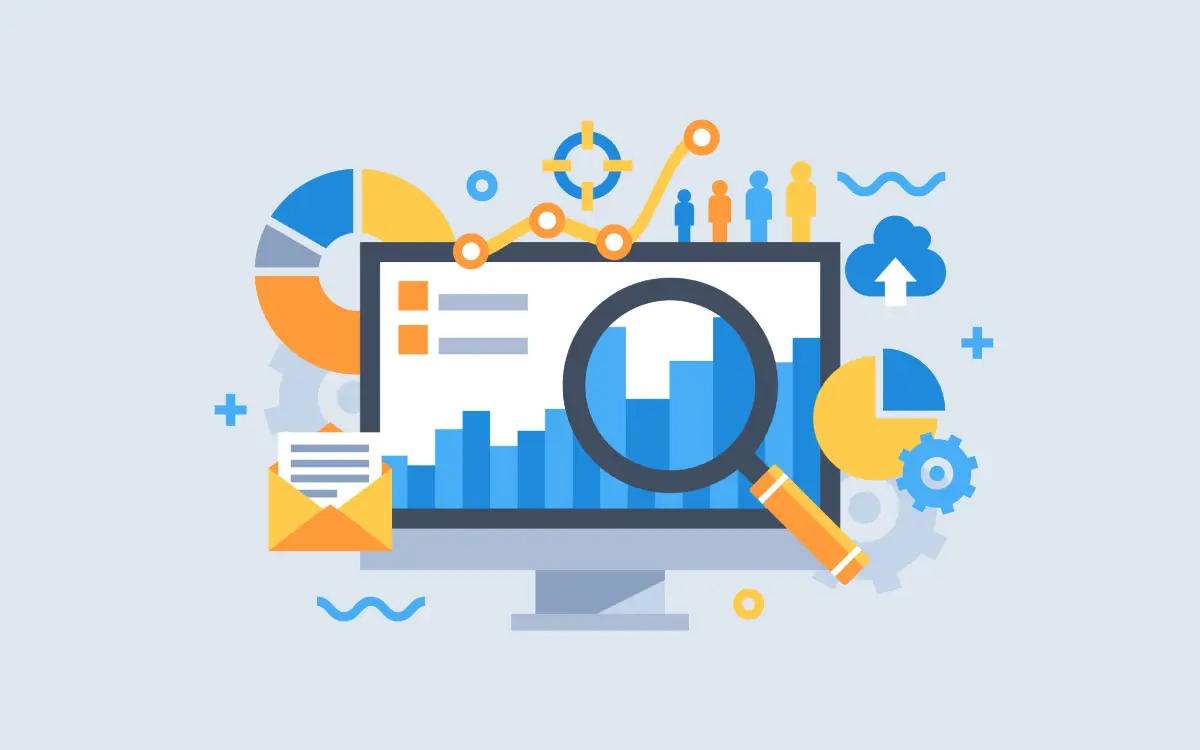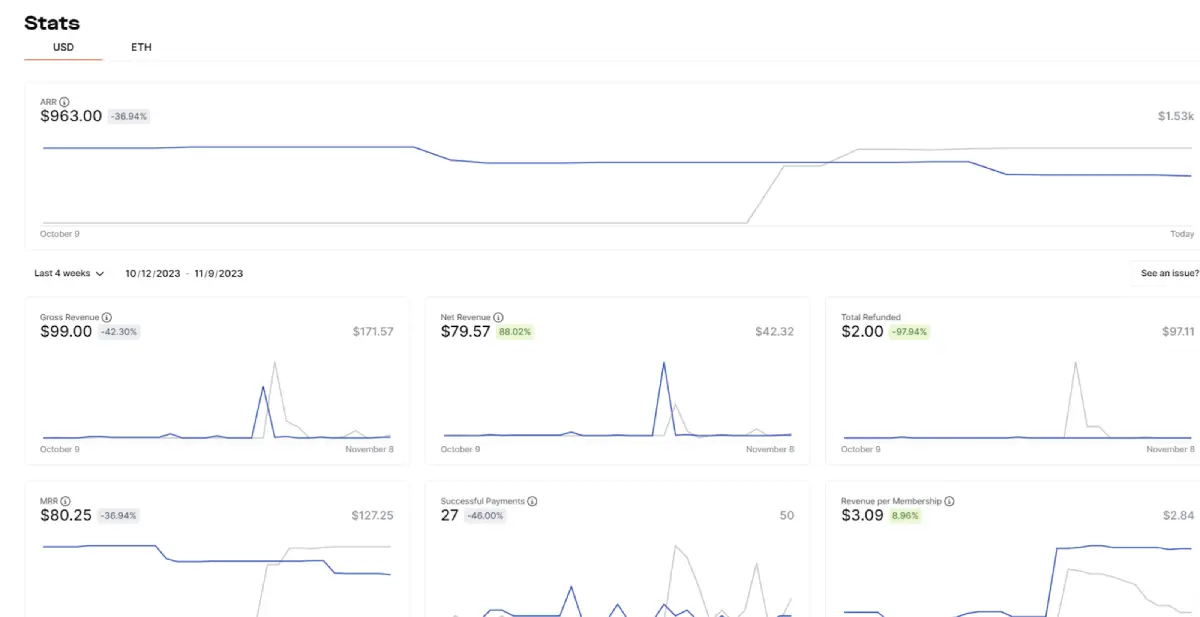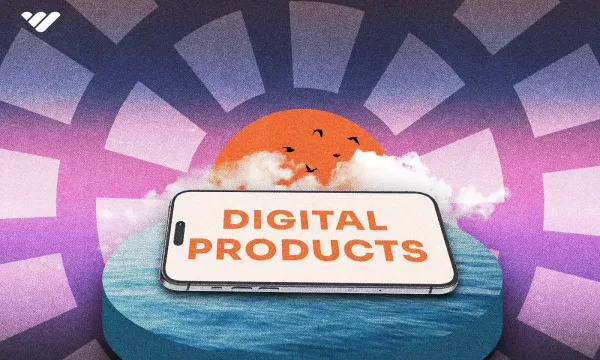Understanding customer lifetime value (CLV) isn’t just an important business metric for product pricing and customer acquisition models, it’s an essential part of business success.
Many business owners underestimate and completely ignore areas of their organization that can substantially benefit from clear and accurate calculations of what a customer is truly worth.
To help clarify CLV, which is one of the most important calculations for any business, we’ll cover the right way to approach it, provide some examples, and highlight actionable steps to help all businesses improve CLV.
Let’s start with a definition.
What is customer lifetime value? ⏳
Customer lifetime value (CLV) is a statistic that calculates how much revenue a company achieves on average per customer. The calculation uses measurable business metrics in a relatively simple formula, providing much more valuable information than just the average sales transaction.
This statistic provides clear information about how much money a business can expect to achieve long-term for each new customer it acquires.
Calculating the lifetime value of a customer is generally more useful once your business is already fairly established. Without enough data, you won’t be able to gather any actionable insights and you might not yet know what your true CLV is if you are still figuring out your product line.
While getting the CLV figure requires little more than a simple calculation, measuring the various input metrics can get tricky. As with any business calculation system, garbage-in-garbage-out (GIGO) is the most common reason these statistics fail to provide valuable information.
However, taking the right steps in measuring the input variables can provide an array of benefits, including much more information about a wider range of business processes beyond just whether a pricing model is optimized or if a customer is spending enough.
It’s also important to understand that calculating CLV should never be a one-off calculation. Businesses must measure this value regularly and compare data against historical values to understand whether business decisions are paying off.

Why is CLV an important business statistic? 📊
It might seem like a dollar value for an average customer is a simple business statistic, but with continuous measurement, this statistic allows business owners to make better-educated decisions that can have a significant effect on overall success.
Here are several ways that having a good grasp on CLV will benefit you as a business owner:
A focus on CLV can increase your revenue
Understanding how much the average customer is worth makes it possible to take decisive and measured action that will improve revenue.
Because multiple values go into this metric (average spend per customer, average purchase frequency, and customer retention time), it provides the knowledge to identify multiple areas to boost revenue and reduce costs.
Breaking CLV down into different customer groups provides further insights into which customers are the most profitable.
With this in-depth level of business knowledge and intelligence, you will be empowered to make decisions focusing on actions and customers that have historically proven to maximize revenue.
It can also help you to save money
With proper tracking of all metrics necessary that account for the total spend of each customer, your data will reveal not only where to spend money, but where to cut down on budget.
You might find that certain ad campaigns are not producing any positive return on customers that have already reached a certain CLV amount, so you will stop serving ads to these customers after they reach the threshold.
It might also be revealed that below a certain CLV, it is not worth investing time and effort into following through for upsells, so you can invest your team efforts elsewhere to keep your processes more efficient and labor hours lower.
Understanding CLV can boost your retention rate
Calculating CLV forces business owners to accurately assess the average retention time per customer. Many business owners are surprised to find out what hard data says about their customers' loyalty.
There is a general tendency to focus on a small number of very loyal customers as a guide, but measuring this metric in an unbiased way can reveal underlying issues. For example, perhaps a specific product category or tiered service has a particularly low retention rate, making it possible to actively address those problems with tangible data that doesn't lie.
Additionally, gathering this information and calculating CLV regularly helps identify trends that may harm profitability. Downward trends might not be an issue of bad service or poor product design, but it could indicate that competitors have a better offer that is attracting more customers.
Identify and target your ideal customers using CLV
Understanding how to accurately measure the input variables for CLV allows a further breakdown of calculations by customer segments. There are many options for this, including:
- Customer industry
- Geographic location
- Organization size
- Demographics
- Income
It might sound like a significant effort, but breaking down your ideal customers into their demographics can be invaluable for business owners, as this knowledge makes it easier to identify the most revenue-productive customer groups based on their CLV and rather than simplified purchase data.
The result of going through this process is a better understanding of the ideal customer, allowing businesses to invest more of their marketing and customer acquisition efforts in that particular market segment.
Imagine having more data about the best and most loyal customer segment and knowing how to target them to gain more of such reliable revenue streams–this is basically like having a crystal ball to identify levers that you can pull to produce more revenue for time or money spent towards a certain demographic.
Improve financial planning and forecasting
It’s impossible to improve things without measuring them first. That’s a simple concept that too many business owners neglect to implement in all their organizational decisions.
Because calculating CLV forces businesses to precisely measure important metrics, it provides a starting point for regularly compiling historic customer data. It’s then possible to use that data to measure the success or failure of company decisions.
For example, changing the tiered structure of a SaaS product could lead to increased initial sales but lower retention rates. Comparing the impact of those decisions on CLV to historical data provides measured evidence of the success rate.
Learning from those business outcomes allows for better planning and allocation of investments, ultimately leading to more accurate forecasting of future profitability.
Identify consumer behavior through CLV
Finally, CLV helps business owners to better understand consumer behavior in their target audience, including product preferences, spending patterns, reactions to price changes, and changes in loyalty.
It’s critical to always remember that customer behavior will change over time, and many market forces will also influence it. From new competitors to breakthrough new technology, customers will adapt and change their purchasing habits.
As a business owner, CLV is one metric that can help identify changes in customer behavior at an earlier stage, allowing for a faster response time to adapt products and services and avoid serious impacts on revenue.

The two different types of customer lifetime value 🔍
Before we get to the actual process of calculating CLV, it’s important to understand that there are two types of CLV.
Historical customer lifetime value
Historical CLV calculations use past business data about customers to determine what the CLV is looking backward. Essentially, business owners use sales data, repeat customer purchase information, and past retention rates to make this calculation.
The main benefit is that this calculation doesn’t require complex forecasting models but is based on sales data and measured customer behavior. It requires just a calculator, and the result is a pretty accurate CLV from a certain point in time to the present.
The main downside is that past experience is not indicative of future results. Just because customers spent a certain amount per transaction and stayed with a company for an average of 3 years, for example, doesn’t mean that will continue.
Predictive customer lifetime value
Predictive CLV models use past and current sales data and apply algorithms and/or machine learning technology to predict how customers will adapt their spending patterns in the future.
These calculation models can become extremely complex and include economic data like interest rate predictions, unemployment rates, inflation, and GDP, along with market data like expected industry growth and demographic impacts.
The advantage of this approach is that it provides better information for business owners to plan and forecast business growth. For example, in a world of rising interest rates and unemployment, customers’ price sensitivity will increase, and with all other variables unchanged, that could mean reduced CLV.
The downside of predictive CLV is that it requires very complex calculation models that go beyond what you can do with a calculator or a simple spreadsheet without extensive knowledge of data science and statistical analysis.
Is customer lifetime value hard to calculate? ⚖️
Calculating customer lifetime value requires no more than a significant sample of historical customer data and some elementary math.
The metrics that you need in order to calculate overall CLV include the following:
- Average spend per customer
- Average purchase frequency
- Customer retention rate
Depending on your business model and history, you should already have a good enough idea of how your business is performing in each of these metrics.
Let’s go over how to plug each of these values in so you can come up with a concrete value for your CLV.
The 5 Step process to measure and calculate customer lifetime value
The customer lifetime value formula requires three pieces of input data and a relatively simple multiplication.
Here is a 5-step process that any business owner can follow with their own data.
Step 1: Average purchase value
Formula: Average Purchase Value = Total Revenue ÷ Number Of Purchases
To calculate the average purchase value, business owners need to take the total revenue for a specific time period and divide it by the number of individual purchase transactions in the same period.
What this value reveals is how much a customer spends per transaction. It’s a valuable metric on its own, as it can reveal opportunities for increasing revenue per transaction through cross-selling or bundled product offers.
More importantly, this is one of two variables needed for calculating customer value in step 3.
Because it’s a fundamental variable for CLV calculations, it’s critical to understand certain challenges in gathering this data:
- Purchasing patterns for some customers can be inconsistent and skew results.
- Seasonality can heavily influence average purchase value in many industries.
- Difficulty in gathering consistent data about each transaction.
- Variability across different customer groups can throw results significantly off.
Step 2: Average purchase frequency
Formula: Average Purchase Frequency = Number of Purchases ÷ Number of Customers
To calculate the average purchase value, you need to divide the total number of individual purchases in a specific period by the number of unique customers in that same period. The number of purchases is already available from Step 1, but gathering data on unique customers can be more difficult.
For SaaS business models where customers pay monthly, it’s much easier than a coffee shop owner, for example, where there are many cash transactions. Tracking the relevant data points requires a good CRM system with highly accurate customer records.
This data point provides information about how often customers purchase on average in a given time frame.
However, there are some challenges with gathering this information:
- SaaS customers often pay monthly or annually, resulting in significant data variance.
- Seasonal purchase habits can increase or decrease purchase frequency data.
- Some customers may bulk-buy products or services, thereby reducing their frequency.
Step 3: Average customer value
Formula: Average Customer Value = Average Purchase Value x Average Purchase Frequency
With steps 1 and 2 completed, it’s time to calculate the average customer value, by multiplying the average purchase value from step 1 by the average purchase frequency from step 2.
It’s important to understand that this is the customer value for the same chosen time period used to gather metrics for the first two steps. For most businesses, that will mean one year, but for organizations with many buyers and transactions, it can be viable to work out CLV by quarter to identify seasonal trends and impacts.
Step 4: Average customer retention rate
Formula: Average Customer Retention = Sum of all Customer Lifespans ÷ Number of Customers
Calculating the average customer retention rate, aka customer lifespan, requires dividing the sum of customer lifespans by the total number of customers. One of the most difficult things about this metric is understanding whether a customer is still active or not.
For example, some people might only return once every 18 months, and without long-term data, it can quickly happen that such a client is dismissed as inactive when, in fact, they might return to buy in a few months.
This can be one of the most challenging metrics to gather data for because of the following reasons:
- Gathering exact data about customer lifespan can be very difficult.
- It can eliminate customers who may go to a competitor for a while before returning.
- Businesses with only a few years worth of data will struggle to accurately calculate the lifespan.
Step 5: Calculate CLV
With the values calculated in Steps 3 and 4, it’s now possible to work out the lifetime value of a customer. Again, it’s vital to note that without correct input values, this calculation could provide a wrong reflection of true customer value.
Calculating CLV involves multiplying the average customer value from step 3 by the average customer retention rate from step 4.
Formula: Customer Lifetime Value = Average Customer Value x Average Customer Retention Time
To clarify this entire process, we’ll look at some examples.
Example CLV calculations ➗
Let’s look at two examples that illustrate the steps from the previous section.
Simple coffee shop example
While this is a simple calculation example, it’s important to note that having the relevant data available takes effort and investment. For example, a coffee shop that only accepts cash and doesn’t have a transaction tracking system will find it difficult to gather the necessary data.
But with the right point of sale system, loyalty program, and integration with a CRM tool, it’s possible to have extremely accurate customer data at the press of a button.
Imagine a coffee shop near a college campus, and let’s say the average transaction is $6. Students visit the coffee shop four times a week and are in college for about 34 weeks of the year over two semesters.
A typical student is in college for 4.5 years before most of them leave the area.
Calculation: CLV = $6 (per sale) x 4 (visits a week) x 34 (weeks at college) x 4.5 (years average time at college) = $3,672
Of course, some locals and faculty staff might be long-term customers, highlighting the importance of segmenting the process into different groups to gain better knowledge from CLV.
Complex SaaS example
Next, we will demonstrate a more complex calculation using a SaaS business model. In this case, we have a company that offers cloud storage with three different tiers of product offerings.
Each tier aims to satisfy the needs of very different customers, including home users, small businesses, and large corporations. Fortunately, online SaaS businesses have a lot of accurate sales data because every client requires an account and digital payment methods.
As a result, it’s easier to gather the data, but the multiple tiers of customers require segmenting the sales data based on each tier.
Here is what those calculations could look like:
Tier 1 (Consumers): CLV = $10 (monthly subscription cost) x 12 (annual payments) x 1.3 (average years of retention) = $156
Tier 2 (Small Businesses): CLV = $50 (monthly subscription cost) x 12 (annual payments) x 3 (average years of retention) = $1,800
Tier 3 (Large Businesses): CLV = $75 (monthly subscription cost) x 12 (annual payments) x 3.5 (average years of retention) = $3,150
With this information, business owners can compare the CLV with the acquisition cost for each tier and determine the greatest profit margins.
What industries have the highest customer lifetime value?
CLV varies a lot by industry, with some businesses barely achieving $100 in lifetime value, while other industries accomplish significant loyalty with very high-priced services and products.
Here is a selection of some of the industries and services with the highest CLV rates based on extensive market research:
| Industry | CLV |
|---|---|
| Business consulting | $385,000 |
| Healthcare consulting | $328,000 |
| Commercial insurance | $321,000 |
| Financial advice | $164,000 |
| Digital design | $91,000 |
| Medical billing | $88,000 |
| HVAC | $47,000 |
11 wteps to increase customer lifetime value 💡
An accurate CLV calculated and measured over time provides a lot of business intelligence to make better decisions and monitor their impacts.
Let’s now take a look at 11 steps that can improve CLV in all types of industries.
Increase average order value
Increasing how much customers spend with each purchase is not as simplistic as raising prices. Doing this could actually result in customers leaving, thereby reducing the retention rate and CLV.
A smarter way to increase average order value is to introduce bundle offers that give buyers discounts if they combine multiple products into one transaction. This can also include bulk discounts, cross-selling, and rebate incentives as marketing tactics.
In the SaaS industry, it can be smart to diversify with a wider range of tiers, making it easier for customers choosing a cheaper tier to gradually upgrade to higher-value tiers.
Increase average customer lifespan
One of the critical variables in the CLV calculation is customer lifespan, aka retention rate. The longer the average person stays with a company, the more that lifetime value will increase, even for relatively inexpensive services.
It’s also important to factor in that acquisition costs for new customers are generally much higher than costs associated with retaining them. As a result, increasing customer lifespan can boost CLV while at the same time reducing acquisition costs.
Improve customer acquisition processes
Marketing, advertising, and sales are the main processes that feed into customer acquisition, so ensuring that each of these steps is optimized is an ongoing task that often needs improvement.
This should not be mistaken as a step to improve acquisition costs but rather to impact the customer experience through the sales funnel. Doing this properly will set the stage for a solid and long-lasting relationship between you and your customers.
One common improvement is to eliminate situations where new customers feel like they were promised too much and delivered too little. By over-delivering, you can establish trust from the critical first impression that can make or break a B2B or B2C relationship.
👉Read: Everything you need to know about CAC
Streamline onboarding processes
Customer onboarding is the process of familiarizing new clients with a product or service. For example, with a car dealer, this can mean spending some time showing a new car buyer how all the controls for their new vehicle work and how to best get in contact with any further questions or issues that might arise.
In a SaaS company, this can involve detailed training and educational material in different formats to help new customers better understand how to use their newly purchased software.
This is an important step that can improve CLV because convincing a customer to buy is only the first step of a hopefully long customer journey. Making it easier to learn how to get the most out of a product will improve that first impression and foster loyalty.
Introduce reward programs
While improved products can boost repeat sales, many businesses can significantly improve their CLV through programs that reward loyalty. From a simple loyalty offer for a free cup of coffee after ten purchases to more complex discounts for tiered subscriptions, these types of programs can greatly impact customer behavior.
The added benefit of having a reward program is that it enables further collection of accurate customer sales data, which is critical to achieving accurate CLV calculations.
Set up referral incentives
This might seem like a business practice to boost sales in general rather than CLV, but with the right approach to referral incentives, it’s possible to increase retention and set the stage for improved loyalty with new customers.
With the right incentives, existing customers will feel like they are being rewarded for referring others, encouraging them to stay active for longer. At the same time, a recommendation from a friend or family member is one of the best ways to reduce acquisition costs while simultaneously setting better expectations.
👉Read: Marketing affiliate programs
Seek and listen to feedback
Business owners make many decisions based on their experience, input from team members, and industry research. However, the best way to improve customer satisfaction is by listening to what people have to say.
By requesting feedback through surveys, social media, and customer service inquiries, it’s possible to find exactly what frustrates people and what features they are missing to make their lives easier.
It takes much of the guesswork out of improving a product and ultimately leads to better CLV.
👉Read: Keeping customers happy
Approach product development through MVPs
A minimum viable product (MVP) is a development process that creates multiple iterations of product versions with enough features to make it an interesting option for customers.
Using feedback and usage data, businesses can better focus their development attention on the areas customers like and use most.
The impact of this approach is that customers receive continuously improving products based on their experiences, giving them the confidence that they will continue to be satisfied in the future.
Work on faster response times
The Internet and social media have made it easier than ever for people to get answers quickly about problems they encounter. As a business owner, it’s critical not to leave customers waiting when they need help.
Based on HubSpot research, most people expect to receive answers from customer service in less than five minutes. While achieving that is not easy, the rewards for customer satisfaction and loyalty will come in higher CLV.
👉Did you know - Whop's customer service team is available 24/7, with an average response time of under 5 minutes and a 97% satisfaction rate - helping businesses to keep their customers happy!
👉Read: All about Whop's Resolution Center
Provide free advice and tutorials
The more complex a product is, the more difficult it can be for customers to take full advantage of all features. Take the iPhone for example; most people probably barely use 30% of its features, mainly because they don’t fully understand all the capabilities.
To address this, Apple provides many tutorials in the form of videos, instructional webpages, and even in-person tutorials at dedicated stores.
The more customers understand the full potential of what they are buying, the more likely they are to become active repeat customers.
Improve customer service metrics
There are plenty of customer service metrics like call answering time, first-call resolution, and overall satisfaction rates. And the more a business can improve these metrics, the more likely customers will stay loyal.
Research suggests that over 90% of customers will repeat purchases with companies that offer great customer service. It’s an undeniable statistic that shows post-sale service is as important as acquisition efforts.
👉Read: Keeping Customers Happy
Take a proactive approach to CLV
CLV has to start with gathering accurate data, and the sooner business owners take the necessary steps to implement a CRM, the more reliable those first calculations will be.
Our 11-step process outlined above will make the calculation process easier, but most of your efforts have to be in gathering and sorting data in the best and most meaningful way possible.
Not only will this provide a lot more information about the real value of every customer, but it will provide lots of valuable information about how to best implement revenue-improving decisions.
CLV pros and cons
Understanding your customer lifetime value will shed light on areas of your business that will help you improve, but it can’t be relied on as the end-all, be-all metric. Here is a summary of the pros and cons of paying attention to the CLV in your business
Pros
- From the CLV, you will have uncovered metrics that will increase your bottom line and cut spending
- Ability to find and target your ideal customer
- Boost retention rate and reduce customer churn rate
- Have insights that will allow you to innovate in competitive markets
Cons
- If you don’t have enough data, trying to measure CLV too early is essentially useless
- Can be overanalyzed
- Possible to produce false correlations
- Is potentially a distraction from a larger problem such as poor product or processes
To summarize, CLV is a critical metric for any business owner to be aware of, and if you haven’t taken the steps already to calculate it, you should take the time to do so as its benefits can give you insights that can increase customer loyalty and the overall bottom line.
However, don’t get caught up in over-analysis, especially if you have larger problems to attend to such as a product or processes that are in need of improvement.
How to track and improve customer lifetime value with Whop!
For established business owners who want to access a powerful dashboard with data that will give you insights to calculate CLV and more, look no further than Whop.
With Whop’s API, you can easily integrate its dashboard as your CRM for your product or service.
After doing so, instead of having to go through manual calculations, you will be able to see the total spend of each customer within the dashboard among other key metrics as follows:

Additionally, you’ll be able to access and view historical data in easy-to-read charts that display summaries at a glance, including overall gross and net revenue, refunds, MRR, number of successful payments within a certain time period, and average revenue per membership.

From this dashboard, you can glean insights at a glance, including those that will allow you to calculate your Customer Lifetime Value so you can continue to optimize your business operations.
So, if you’re ready to get going as a business owner with a ready-to-go product, be sure to launch on our marketplace which is quickly becoming known as the number-one place to buy and sell any digital product. It takes less than 10 minutes to do so, and it could mean the first step of a highly profitable and rewarding journey!
📚 Read next: SaaS customer lifetime value: What it is and how to measure it



![Top 23 best dropshipping Discord Servers [July 2025]](/blog/content/images/size/w600/2024/02/Top-Dropshipping-Discord-Servers--1-.webp)
![Top 16 best ecommerce Discord servers [July 2025]](/blog/content/images/size/w600/2023/09/ecommerce-groups.webp)
